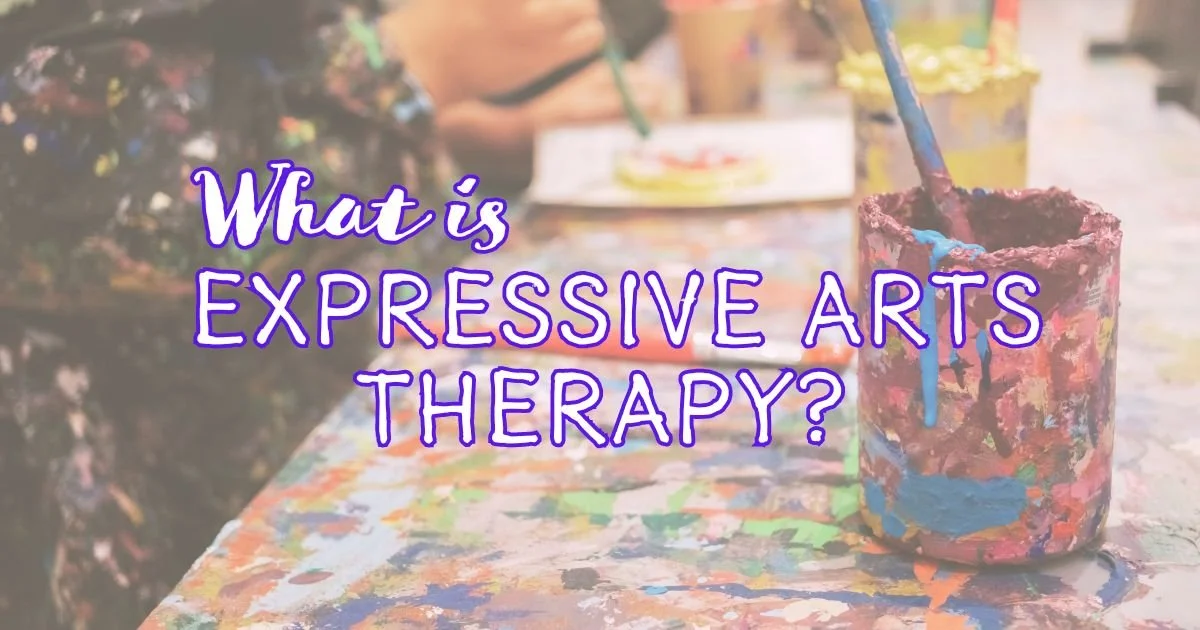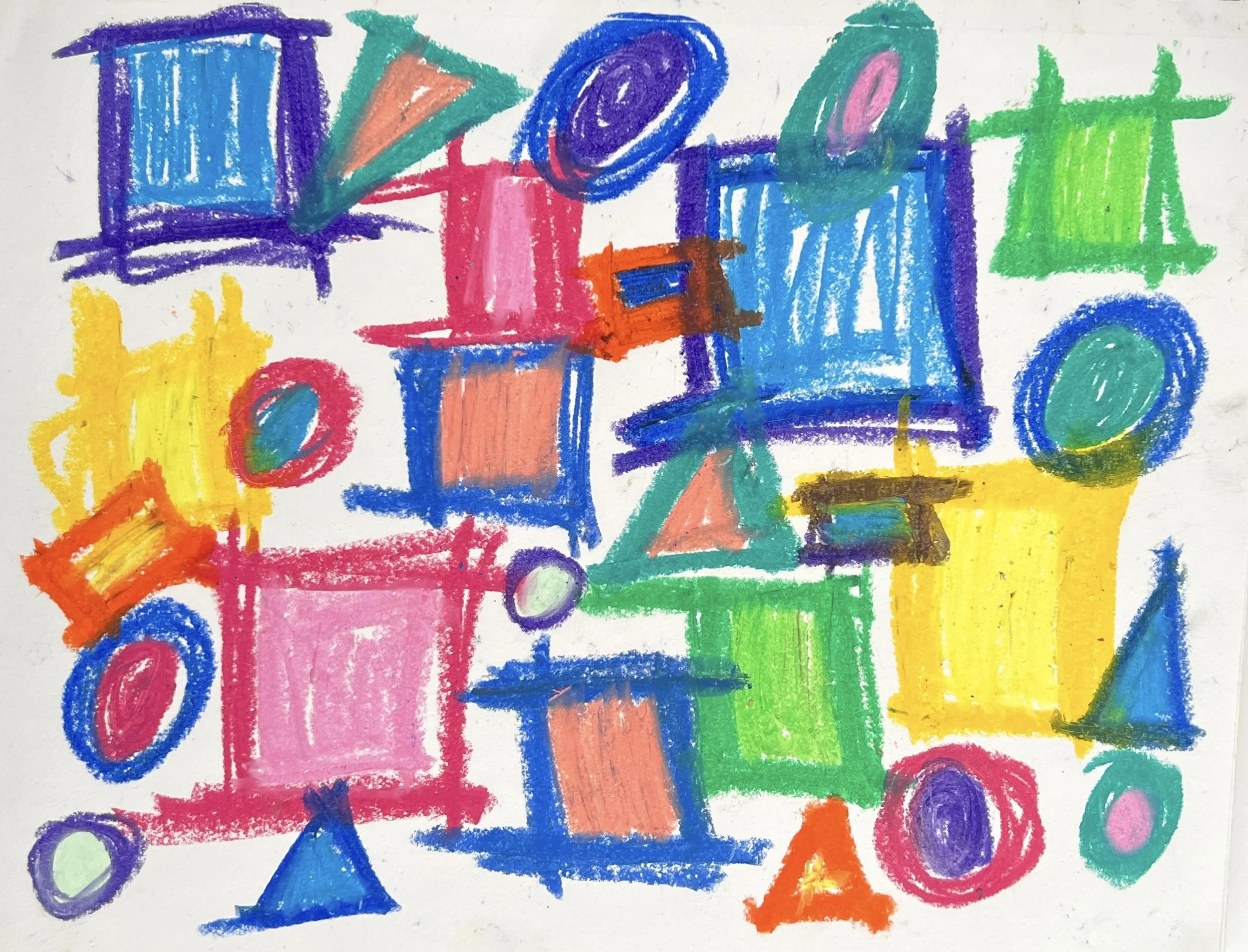What is Expressive Arts Therapy?
If you’ve ever felt like traditional talk therapy just doesn’t cut it, you’re not alone. Often, words just aren’t enough - or sometimes, we can’t even find them. That’s where expressive arts therapy can really make an impact - it allows us to express what words can’t.
The expressive arts can enhance one’s spiritual, emotional, cognitive, and physical well-being. The process of creating allows us to tap into the unconscious, helping us process experiences and emotions and find deeper meaning. In expressive arts therapy or coaching, this often means bringing to light areas that are blocked, stuck, and holding us back.
The best part - no talent is required!
The expressive arts are not about producing some museum-quality piece of art, it’s about the process of creating and connecting with ourselves and having witness to that process.
So What Exactly Is Expressive Arts Therapy?
Expressive arts therapy is a form of person-centered counseling that uses multiple art modalities—visual arts, music, dance, drama, writing, and more—as tools for self-expression and healing. Instead of just talking about your emotions, you get to draw them, paint them, dance them, or even turn them into a Tik-Tok —whatever is your jam!
A common goal for expressive arts sessions is to engage multiple senses during the creative process, helping you explore your inner and outer worlds. The counselor or coach will help facilitate the experience, asking questions to help you communicate feelings, explore content, and make connections for growth. Art comes from deep within us, providing a rich opportunity for self-reflection and personal growth.
Theoretical Foundations
Expressive Arts therapy incorporates elements of:
Person-Centered Therapy: The counselor provides a safe, non-judgmental, supportive space for you to freely explore your individual path to self-discovery. Humans are capable, resilience, and have the tools they need to thrive.
Mindfulness: Focus is on awareness of the present moment. Through art making and creative expression, you are encouraged to stay in the here and now and explore what intuitively comes up for you.
Mind-Body Connection: There is a profound link between the mind and body. Engaging in creative activities can help process emotions that are stored in the body and inaccessible with words, leading to holistic and integrative healing.
Examples of Expressive Arts
Playing music
Reading or writing poetry
Drawing or doodling
Reading fiction
Sculpting/clay making
Journaling
Making a memory book
Listening to music
Writing lyrics
Making a life map
Dancing
Making videos
Improv or theatre
Trauma-Informed Expressive Arts
The expressive arts can be especially powerful for overcoming and healing trauma. For many of us, traumatic experiences leave us speechless. The area of the brain responsible for speech, Broca’s area, shuts down when recalling traumatic experiences. Both a non-verbal and verbal practice, the expressive arts can help make the inaccessible, accessible, encouraging movement of emotion and personal growth.
Cathy Malchiodi outlines several tenets of trauma-informed expressive arts therapy in her book Trauma and Expressive Arts Therapy (2020). We believe these are integral to the ethical practice of the expressive arts and they guide how we approach sessions with clients.
Neurodevelopment and neurobiology inform the application of expressive arts therapy to trauma-informed intervention.
Expressive arts therapy is focused on supporting self-regulation and co-regulation.
Expressive arts therapy is used to help identify and ameliorate the body’s experience of distress.
Expressive arts therapy is used to establish and support a sense of safety, positive attachment, and prosocial relationships.
Expressive arts therapy is used to support strengths and enhance self-resilience.
Expressive arts therapy respects individual preferences for self-expression, particularly of trauma narratives.
Expressive arts therapy provides meaning-making experiences and ways to imagine new narratives post-trauma.
What does that all mean?
Trauma isn’t just psychological - it’s a full-bodied experience that impacts our development, worldview, and life experience.
Creating and expressing ourselves helps us feel good. Because the arts are a full-bodied experience, they can help us reconnect with our bodies and identify physical sensations of stress. They can also help us move stress, overarousal, and overwhelm through our bodies. Collaborating with others can also help us do this. Using the arts to self-regulate can be an intentional tool when feeling stressed or overwhelmed.
Humans are innately resilient and capable. They are complex, unique, and each on their own path. Our uniqueness is something to be celebrated. Expressive arts therapy and a person-centered approach can help us to re-establish a sense of safety and security in ourselves and our relationships, reconnecting us to our inner tools and resources.
Expressive arts therapy allows us to work through trauma that has no words, providing an opportunity to explore, restructure, and reframe difficult experiences in action-based ways.
What Does an Expressive Arts Session Look Like?
At Crooked Tree Arts & Wellness, we’ll usually begin a session by checking in and discussing your session goals. This might involve recapping your week and identifying what stands out to you or coming in with a fixed intention. From there, we’ll collaborate on an expressive arts exercise based on your goals, preferences, and needs. This might be drawing stick figures, a short writing exercise, music, painting, or even expressive movement. After that, we’ll discuss your experience and help you integrate these experiences into everyday life for healing and growth. The exercise might continue with ‘homework’ to further the experience and help create long-lasting changes.
Benefits of Expressive Arts
Engages the body
Unleashes creativity
Connects to intuition/breaks down barriers
Heals through expression
Promotes emotional growth and healing
Promotes enhanced social relationships
Heals traumatic experiences
Strengthens the sense of self
Decreases stress and anxiety
Promotes self-regulation
Enhances nonverbal communication
Helps create new meaning for hard situations
Restores a sense of aliveness and energy
Can provide a connection to your inner child
Who Is Expressive Arts Therapy For?
Expressive arts therapy is for anyone who feels stuck, overwhelmed, or even just curious! It can be really powerful for artists struggling with creativity blocks, those paralyzed by perfectionism and anxiety, and neurodivergent individuals who always feel a bit out of place and without words.
My Personal Experience in Expressive Arts Therapy
As someone with alexithymia (really common in autistics), it can be really difficult for me to identify and name my emotions. I remember sitting on my ex-therapists couch, her asking the age-old question, “How did that make you feel?” Cue the doom music. I HAVE NO IDEA. It takes me time to figure those things out, let alone find words for it. At the time I didn’t even know I was autistic or what alexithymia was - I just knew I HATED that question.
When I found the expressive arts I felt like I finally found a way to make sense of that giant brick sitting on my chest. While I might not be able to find the words for what I’m feeling, I can pick a color, draw a scribble, or make a stick figure that connects to what is going on. Over time I’ve been able to use my images to identify emotions. This has been a vehicle for both self-expression and self-understanding that’s been especially powerful as a late diagnosed autistic woman.
Is Expressive Arts Therapy Right For Me?
In a world that often tries to box us in, expressive arts therapy says “screw the box.”
Actually, it says “Lets rip up the box and make something new with it.”
It’s about embracing yourself and all your parts, finding your voice, and healing through creative expression. It can be an incredible tool for developing intuition and discovering parts of yourself you never knew existed. if you are open to something new, down for tapping into your creative self, and exploring a new avenue toward healing or personal growth, reach out to us today and we’ll explore if we might be a good fit!
Email Kristina today to schedule your free 15 minute consultation and find out if expressive arts therapy or coaching is right for you.
Sources:
Trauma and Expressive Arts Therapy by Cathy A. Malchiodi (2020)
Expressive Therapies Edited By Cathy A. Malchiodi (2005)




